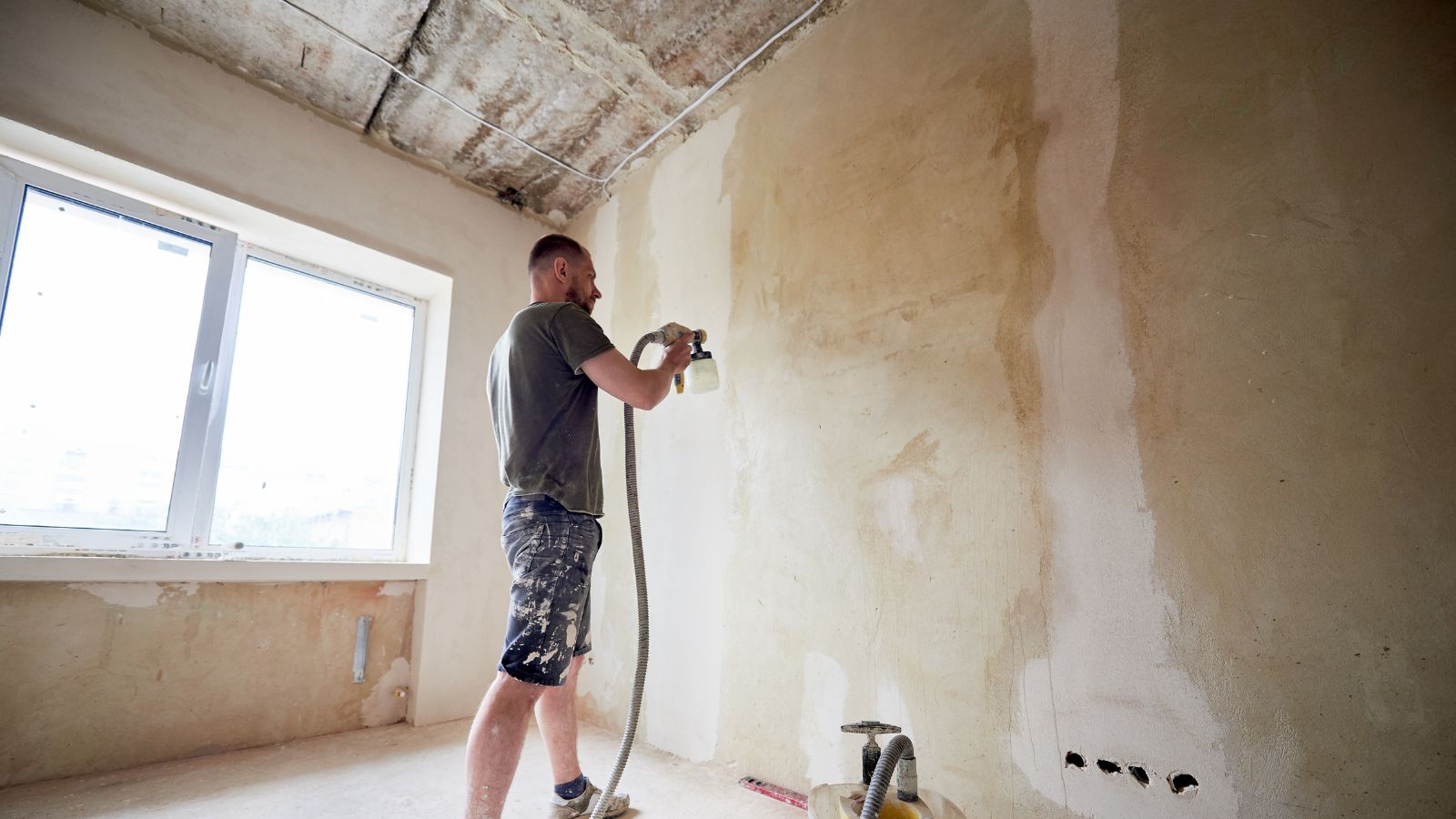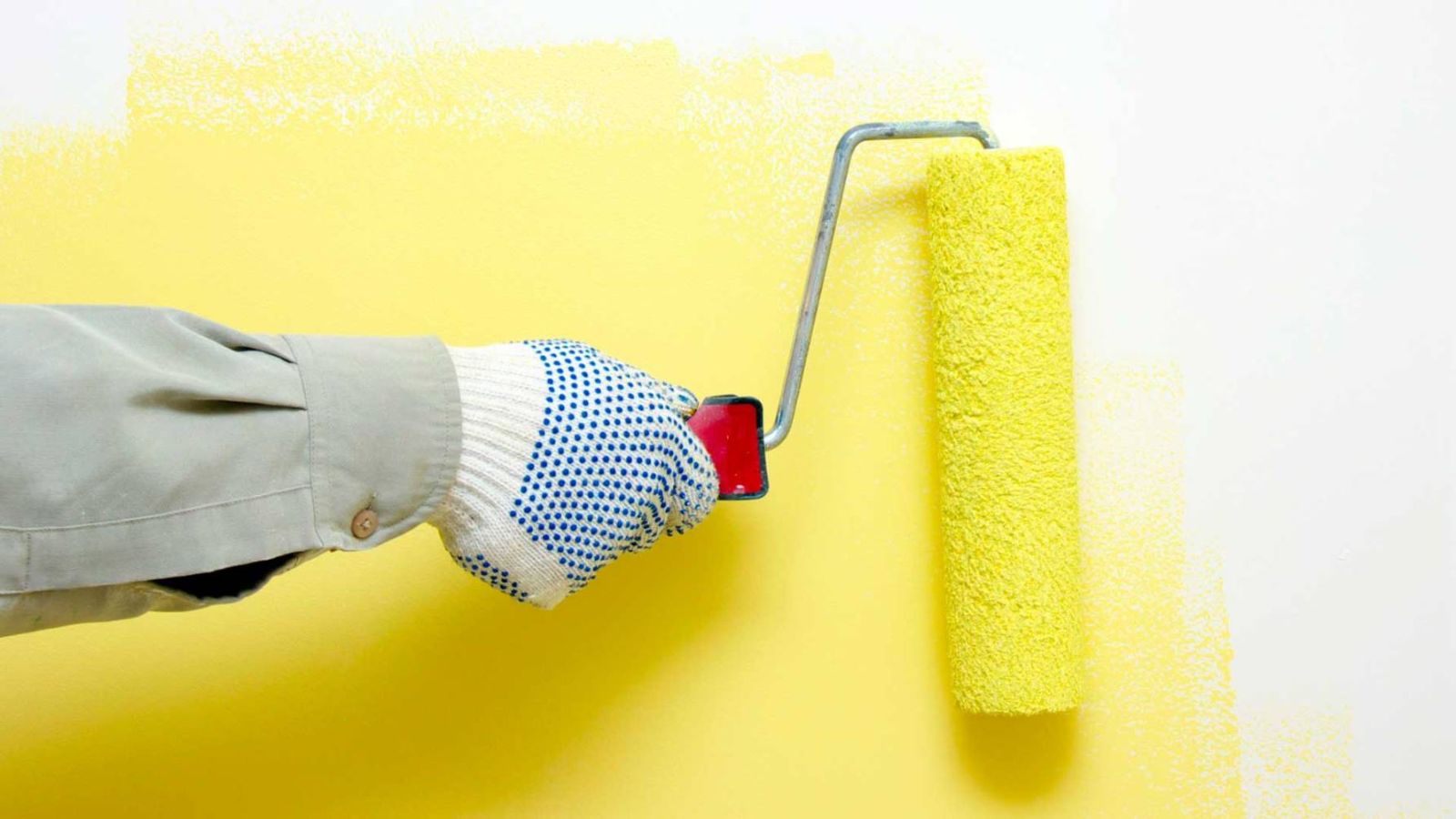There are some DIY tasks out there that most people would never dream of doing by themselves, but painting is not usually one of them. In fact, most people have tried their hand at painting at some point in their life, to varying results. It might seem easy, but it’s actually pretty easy to mess up painting, so if you plan on giving it a go, make sure you don’t make the following rookie errors.
Skipping the Prep Work

It’s easy to assume that painting is just a matter of getting stuck into the process, but if you skip the surface preparation process, your paint adherence and durability won’t be great. Dirt, dust, and grime can all prevent paint from sticking properly, leading to issues like peeling and bubbling. So, take the time to clean, fill holes, and sand any rough areas, and you’ll be able to ensure that your coat of paint has a smooth and stable surface to adhere to, making a lasting, flawless finish more achievable.
Not Using Primer

Not many DIY beginners anticipate how much primer improves paint adhesion, color uniformity, and overall longevity, especially on bare or porous surfaces. Sure, skipping this step may save time in the short term, but it will ultimately result in a patchy or less durable finish. Just apply a quality primer first to help ensure the final color looks consistent and wears well over time–it won’t take you too long, so there’s no reason to skip it.
Choosing the Wrong Paint Finish

Choosing the wrong paint finish can be a time-consuming mistake, as different paint finishes suit specific areas based on function and durability. For example, glossy finishes work well in high-traffic areas and rooms with moisture, while matte finishes are best for spaces with minimal wear. Choose the wrong finish, however, and you might make your paint job look off or require more frequent touch-ups.
Painting Over Flaking Paint

New paint doesn’t adhere well to old, flaky paint layers, so don’t be tempted to cut corners. In fact, painting over loose paint can cause the new layer to peel quickly, so it’s just not worth it. Just remove the loose paint first and create a smooth base by sanding edges, and your paint job will last a whole lot longer.
Using Low-Quality Brushes and Rollers

Another thing that you should never do when painting your home is to cheap out when it comes to buying paintbrushes. We understand–it might seem smart to save on tools that you won’t use often, but it’s often the case that the lower quality your brushes and rollers are, the lower quality your paint job will look. Specifically, your paintbrush’s bristles can shed, streaks will form, and the whole painting process will take way longer than it should.
Painting in the Wrong Conditions

A commonly overlooked part of painting is how humidity and temperature significantly impact how paint dries and adheres. High humidity can prevent proper drying, while extreme temperatures may lead to cracking or peeling. Therefore, it’s best to choose a warm, dry day, making for the ideal conditions for painting.
Skipping Tape for Clean Edges

Nobody likes painting those cumbersome edges, as they’re notoriously difficult to get to without making a mess on the skirting board. However, this is precisely why painter’s tape is such a crucial tool; it helps you cover up those areas that you’re worried about messing up, and without it, even the steadiest of hands can struggle to achieve clean edges. Trust us–complete this step, and your paint job will look all the more professional for it.
Not Testing Paint Colors First

Anyone who has started to paint their walls without testing the paint color first knows how much of a disaster this mistake can be. Color perception varies greatly depending on room lighting and context, so what looks great in the store might feel overwhelming or dull in your space. Paint small sample patches, and this won’t become a problem, but accidentally paint an entire wall with a color that doesn’t match, and you’ve got yourself a whole lot of wasted paint and time.
Painting Too Thickly

People often apply an excessively thick coat of paint because they see it as a clever shortcut, but all this is going to lead to is drips, streaks, and slow drying. In contrast, thin, multiple coats provide a more even and polished finish, while also ensuring that each layer dries properly, reducing the likelihood of smudging or uneven patches. Yes, this technique may take longer, but it will always deliver a smoother, longer-lasting result.
Using the Wrong Type of Paint

Interior and exterior paints have distinct properties that match their intended environments, with interior paint prioritizing washability and color retention, while exterior options resist the elements. Using the wrong type can lead to fading, cracking, or safety concerns, so always check labels to ensure your paint is fit for the space, guaranteeing it looks good and endures well.
Ignoring Ventilation Needs

It should really go without saying that proper ventilation is vital to reducing health risks from paint fumes, not to mention encouraging the drying process. More importantly, though, painting in enclosed spaces without airflow can cause lingering odors and even health issues, so you should keep your windows open or at least use fans, improving air circulation and keeping the job safe.
Painting in Poor Lighting

As we briefly mentioned earlier, good lighting is crucial to spotting missed areas, streaks, or mismatched paint colors before it dries. Without it, it’s far too easy to overlook imperfections that will stand out later. Natural light is ideal, but if you’re working at night, set up multiple light sources to ensure even coverage and the catching of any flaws.
Leaving Paint Cans Open

Even though it might seem like resilient stuff, leaving paint cans open exposes the paint to air, causing it to dry out prematurely. You won’t want this, as even if it still looks fluid, you might find dried clots in your paint, which will stick to the wall. So, close your paint can lid tightly when not in use, and cover paint trays if you take a break.
Forgetting Drop Cloths

Drop cloths protect floors, furniture, and other surfaces from splatters, which can be difficult to clean up afterward–especially with gloss paint. You might think that using old sheets will be sufficient for this, but they don’t always prevent seepage. Instead, just invest in some quality drop cloths or plastic sheeting for full coverage and easier cleanup.
Not Stirring Paint Properly

Paint separates over time, making it crucial to stir thoroughly for even color and texture. A quick stir might not be enough, especially if the paint has been sitting for a while, so use a paint stick to mix the paint thoroughly until the color and consistency are uniform. It’s a small effort, yet it really does make all the difference.
Skipping the Second Coat

Ever skipped that second coat of paint, only to realize that it doesn’t look great and that a further coat is necessary? Yup, us too–it’s a pretty common mistake. As a rule of thumb, a second coat of paint will always offer better coverage, depth, and durability. You probably have some leftover paint anyway, so stop being lazy and use it all up!
Using Too Much Water to Thin Paint

While it’s true that thinning paint with water can help with application, you should watch so that you don’t over-thin it, dilute the color, and reduce coverage. If you do this, you’ll get faded or streaky sections on your walls. When in doubt, follow manufacturer instructions for thinning or consider using a paint conditioner.
Starting in the Wrong Place

When you’re feeling overwhelmed by a painting job, it’s only natural to start in random spots, just to get going. However, doing this can actually lead to overlapping sections and uneven coverage, and therefore, it’s best to start from the top and work downward, allowing you to catch drips as they fall and control application.
Not Cleaning Up Properly

Finally, don’t make the mistake of failing to clean up after your painting session, or you’ll regret it the next day. You’ll have the opportunity to clean up while the paint is still damp, but if you miss this moment, you could ruin your brushes, rollers, or trays with the dried paint. Thankfully, this is super easy to fix–just have a clean-up as soon as you’re done, and we promise that you’ll thank yourself later.
